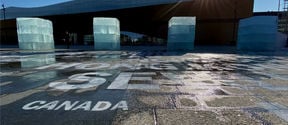Assistant Professor Viktar Asadchy: Teachers and supervisors have played an important role throughout my career
An ambitious goal in the field is to find some completely new applications that do not exist yet.

Viktar Asadchy, who started as an Assistant Professor in August 2022 at the Aalto University Department of Electronics and Nanoengineering, will bring expertise to the novel artificial materials research field.
‘The key aim of my field is to design novel artificial materials that were not conceived before and have great potential for applications. Specifically in my research, I attempt to address several important challenges and opportunities related to artificial electromagnetic materials’, Asadchy says.
Broad knowledge and original ideas were mentioned in Asadchy’s recommendation letter. Viktar is an outstanding scientist who generates original ideas, brings them to fruition, and has broad interests and multi-disciplinary education and experience.
Read the whole press release here
Congratulations Viktar!
The Young Scientist Award may be awarded by The Finnish Foundation for Technology Promotion to a young scientist in the field of technology. The recipient of the award must have accomplished significant scientific research results, created notable technological innovations, and/or worked closely with the business sector. Additionally, the research must have significance from a sustainable development perspective. The recipient is expected to provide evidence of research work after completing their dissertation.
The award may be given to a person who is 35 years old or younger during the current calendar year. The prize amount is 10,000 euros.

An ambitious goal in the field is to find some completely new applications that do not exist yet.

Researchers have discovered how to make a new optical metamaterial that would underpin a variety of new technologies.

The researchers created photonic time crystals that operate at microwave frequencies, and they showed that the crystals can amplify electromagnetic waves.



